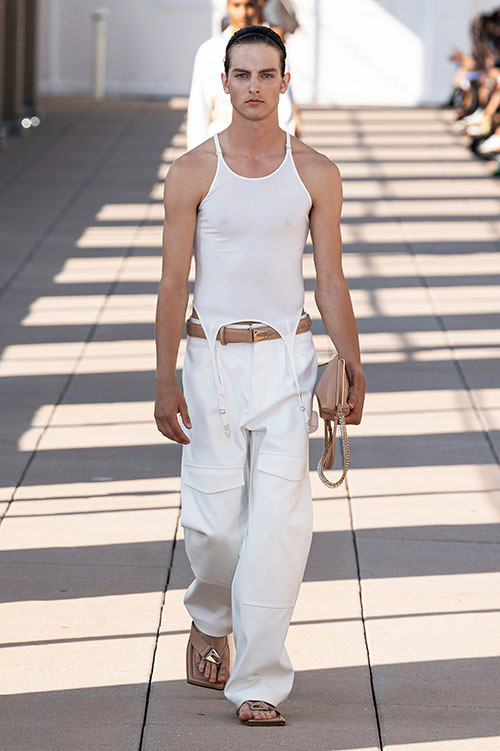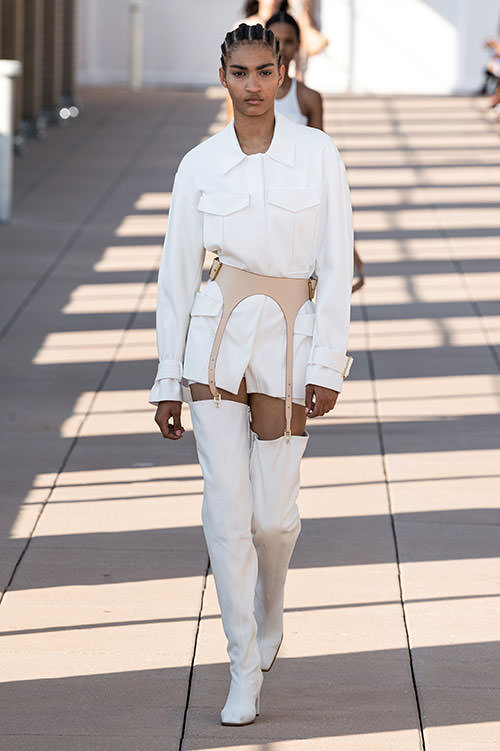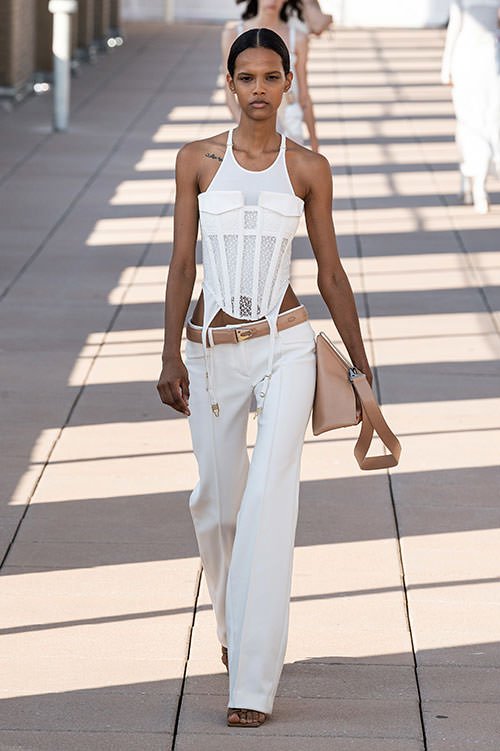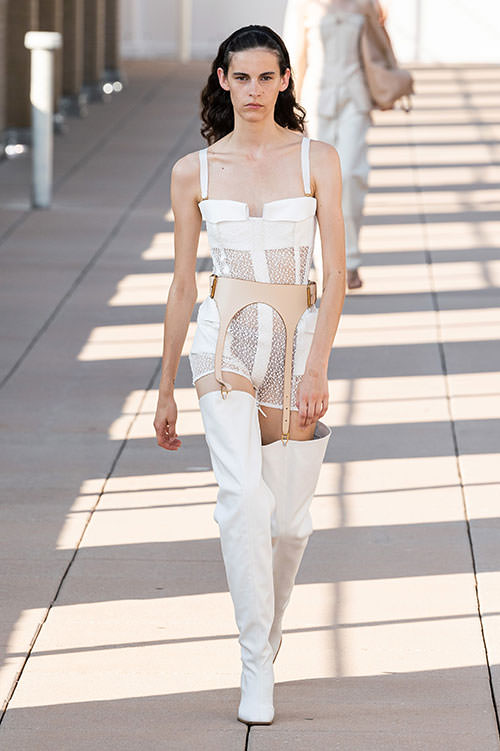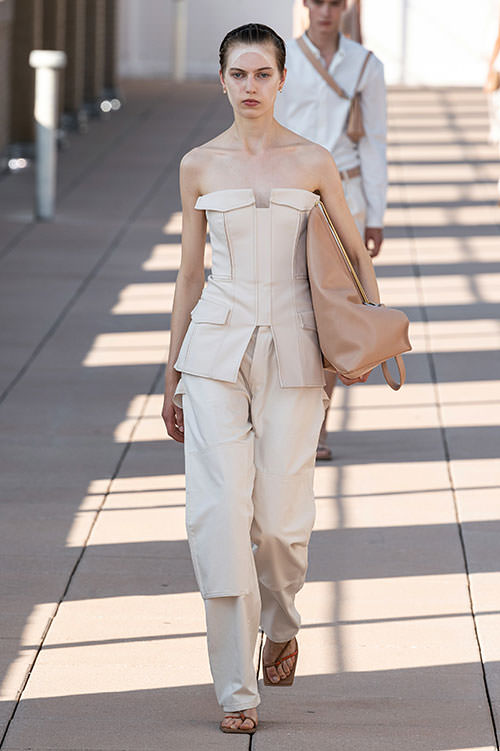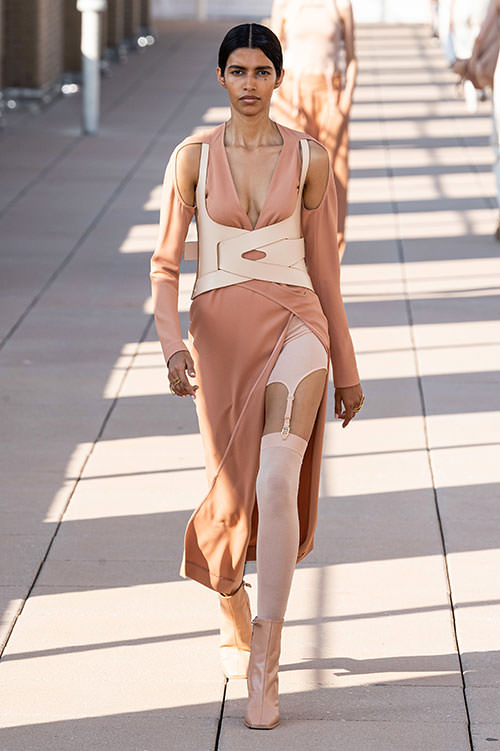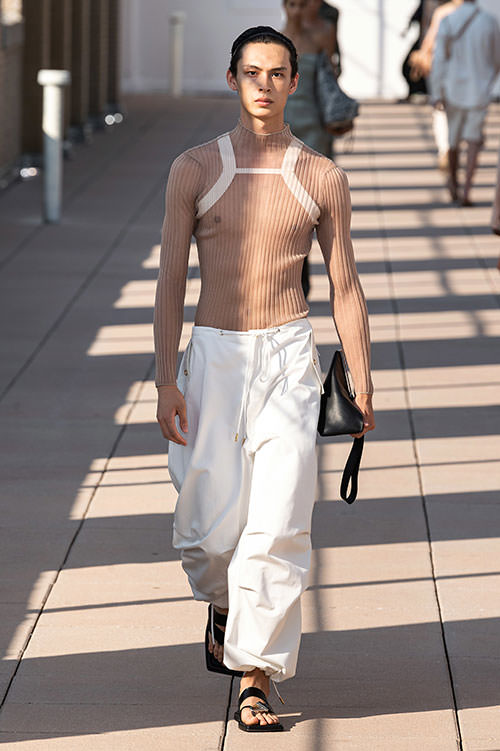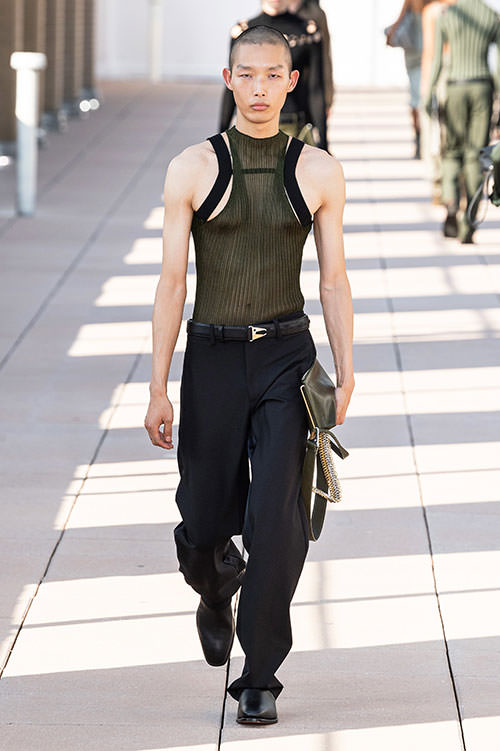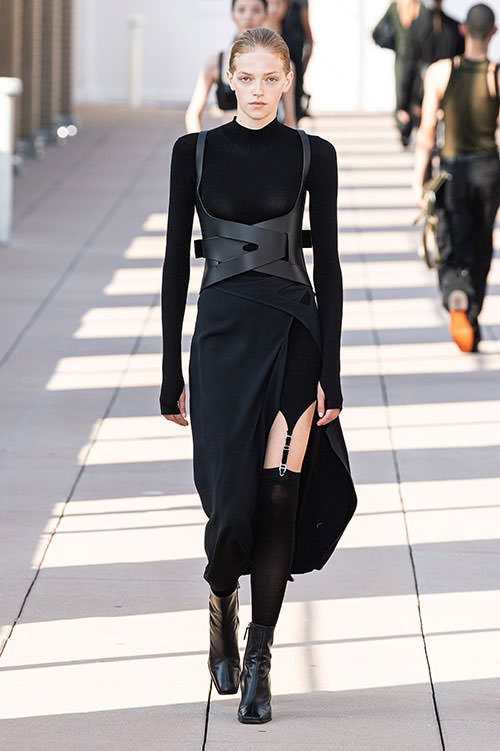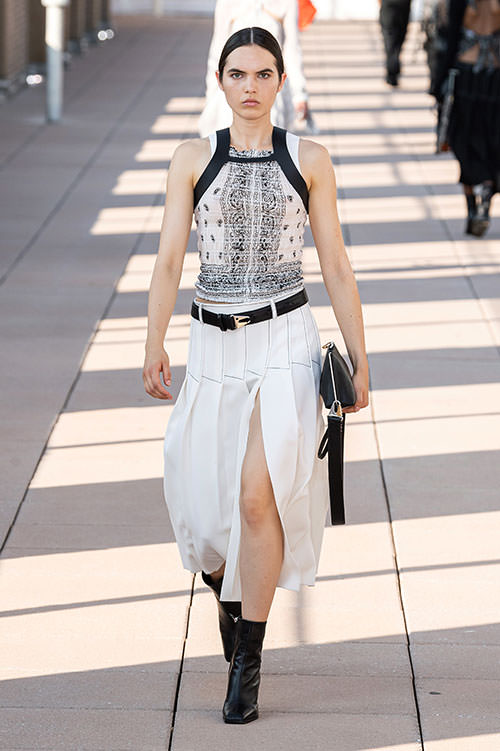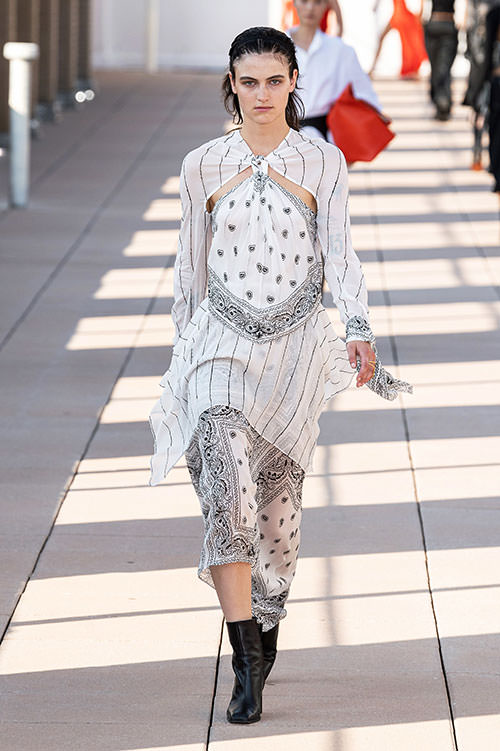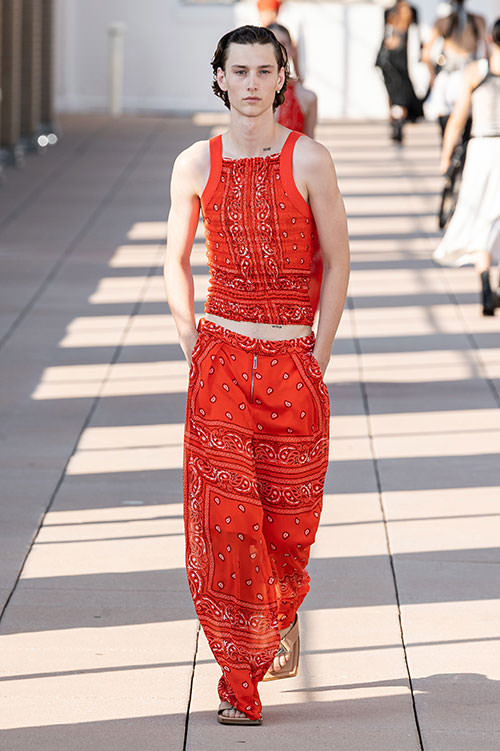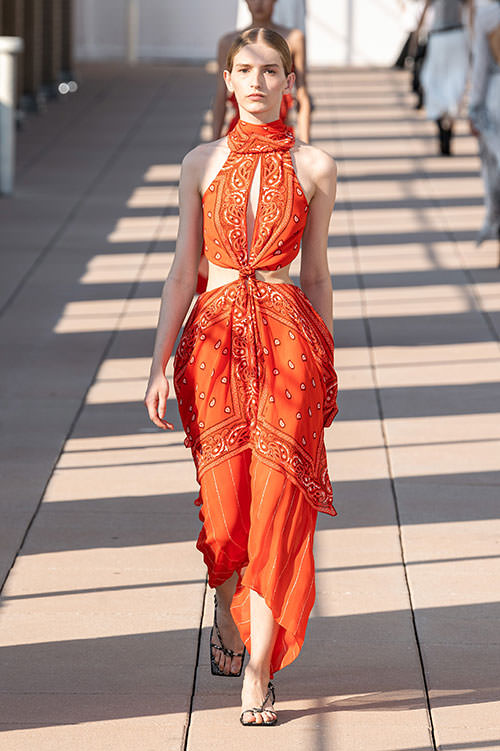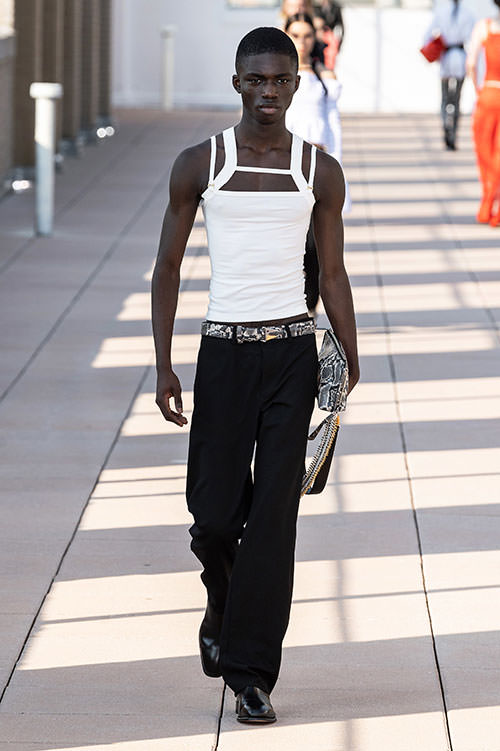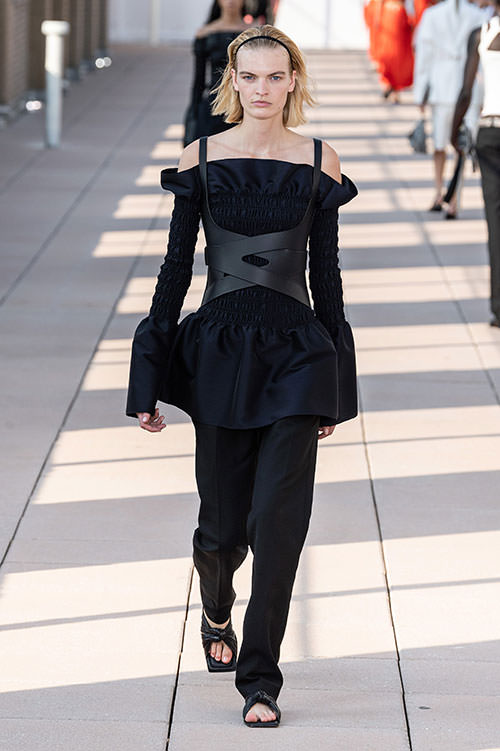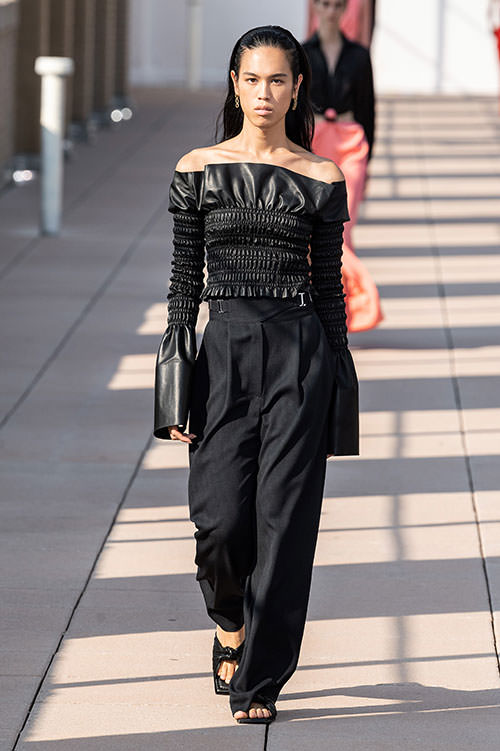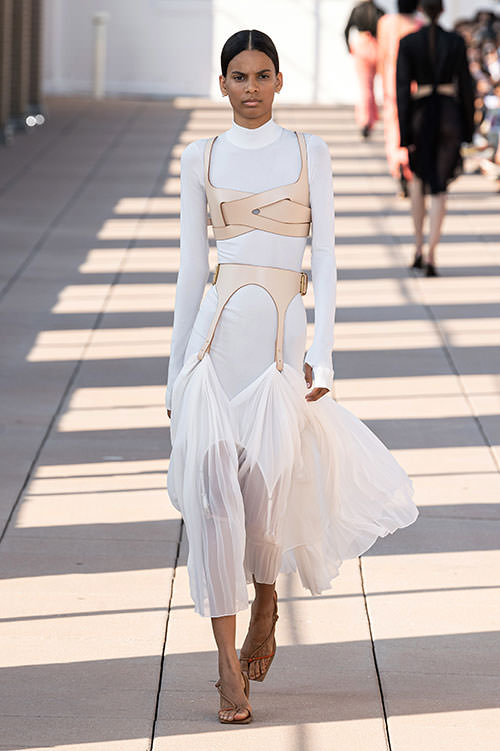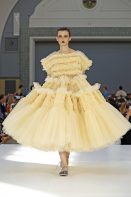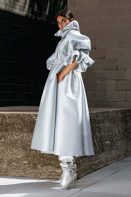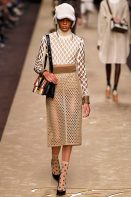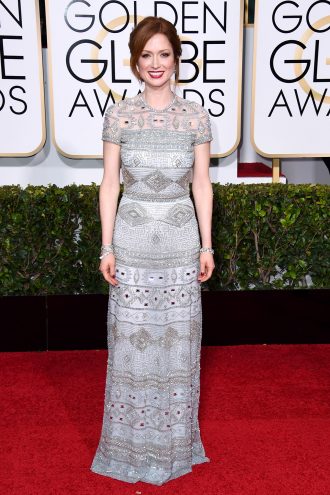The blurred lines of the feminine and the masculine, underwear as outerwear, menswear and womenswear, and the inspiration from the archetypes. Carl Jung would have particularly enjoyed the representation and symbolism of the anima/animus and had a lot of insight into this collection.
The unified thread through out the collection was the references to cultures and sub-cultures and the defining items worn by their members. In this collection there were several themes explored and clothing items reimagined and reinvented: military, lingerie as outerwear, gender fluidity, BDSM/ Fetish as ready to wear, and the use of the iconic bandana pattern and all it stands for.
At first when you see the military details combined with the BDSM/Fetish gear you think “Wow that’s interesting… pairing those together?” The overtly masculine and utilitarian paired with the extreme feminine seems a huge contrast. However, if you make the connection that both the Military and BDSM/Fetish have the ethos of: discipline, a code of ethics, their own language, hierarchy of power, specific cultural norms, a dress code-uniform, and are society unto themselves. They may be the yin/yang, the shadow and the light, anima/animus, but there are also strong similarities.
The opening looks are a direct reference to the military uniform and its defining details, lingerie-underwear as outer-wear, and the combination of the two. A bra made entirely out of two joined military pockets, a sheer boned corset with military pockets over the breasts and dangling garters over the pants, and a strapless military style: tunic and dress.
Enter the subculture of BDSM/Fetish. This “underground” underwear to ready to wear “outer-wear” is refreshing, striking, and provocative. The outfits are accessorized with harnesses, garter belts, bras, and reimagined harness/corsets. These items are collaboration with Fleet Ilya, a high-end leather atelier and erotic wear company. Garters are present on mainly women’s looks through out the collection, with the exception of one menswear look. Many of the garters and garter belts are attached to exposed stockings or thigh high boots, yet another item referencing the BDSM/Fetish culture. The choice of less severe colors for the leather items: crème and light tan leather mitigates and somewhat removes the severity of its BDSM reference and history. There are a few black leather harnesses, which are paired with black or white clothing on both women and men. The leather accessories are surprisingly adaptable to many different styles. These leather pieces have great lines, design, and serve as a design element to the clothing.
The separates are impeccably tailored. The trousers on both men and women are low slung with unisex appeal. The flat pleat waist skirts with contrast piping are a less dense modern version of a kilt. The smocked, off the shoulder shirts, paired with trousers are the most wearable. The almost second skin separates and dresses serve as a showcase and palette for the leather harnesses, garter belts, and bras.
Men are punctuated throughout the predominantly female collection. A tank top is adorned with garter shoulder straps. These are then mirrored on the bottom seam with dangling garter straps, and paired with military front pocket pants. Historically, both men and women wore garters; they were actually a utilitarian piece of clothing going back to the 1300s, a time when these items were unisex. To this day, there is still The Order Of The Garter, which was founded in 1348 by King Edward III, who was inspired by the Arthurian Legend and The Knights of The Round Table. This order once only allowed for aristocratic men, is headed by Queen Elizabeth II, and now admits both men and women. It is one of the highest honors and members are “chosen from a variety of backgrounds, in recognition for their public service.” So, men are in fact, still wearing garters!
The menswear looks have several sheer tops, a body-hugging sweater, and tailored shirts, which are paired with pants or shorts. A few of these men’s looks have harnesses. The men’s sheer tops are the male interpretation of lingerie as outerwear, a male counterpart to the female sheer corset. These sheer tops expose the body and could be called: Man-gerie. Lingerie for men!
There are several looks, in which the entire garment is made with bandana print in black, white, or red. The history of the bandana goes back centuries to 1700 India. The name bandana originates from the word “Bandhati” which means to tie, to be bound. The bandana has an extensive history and is worn by many subcultures: cowboys, gangs, sailors, bikers, hippies, rappers, and LGBTQ, and so on. It’s a trademark of the rebels, the outer fringe, and the non-conformists. These bandana looks are more fluid and unstructured, and a few are literally tied together to make the garment; paying homage to the item’s name. The red bandana garments serve as the only vibrant color in the collection.
I truly enjoyed how Dion Lee took the idea of cultures and sub-cultures and turned it upside down, in and out: literally and figuratively, and flipped genders. His vast imagination, messages, and creative philosophy were not lost on me. In fact, they were provocative enough for me to write about it.
Image Courtesy of Vogue.com


